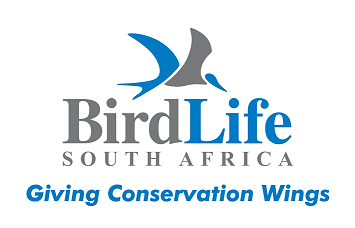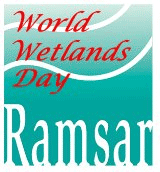
Aims and Protocols
Goal: To act as an effective long-term waterbird monitoring tool, benefiting conservation efforts worldwide.
Objectives:
- Ensure effective project management through working closely with a host of national and international stakeholders; steadily updating and integrating this network of people;
- Coordinate, prioritise and expand waterbird surveys on a national scale with the emphasis on long-term monitoring;
- Ensure effective data management throughout the project;
- Manage, maintain and expand the project database;
- Undertake effective IT development within the project, including the upkeep and expansion of the project website;
- Disseminate data and results through the project website, reports, scientific papers, popular articles, direct liaison with stakeholders, or any other useful means;
- Promote and facilitate the use of census data specifically for policy, planning and research purposes;
- Raise awareness and promote the project through the website, popular articles, newsletters, interviews, talks, or any other appropriate means;
- Submit census data towards the African Waterbird Census Programme in part fulfilment of South Africa’s contribution to international agreements such as Ramsar, Bonn and AEWA.
If CWAC is to be respected as a reliable source of scientific information it must ensure that its methods are sound. CWAC techniques are not difficult or complex but they are important. Please take careful note of the points made here and be sure to communicate those that are relevant to your situation to your counters.
Regular counts: It has been decided that CWAC counts will take place twice a year. Traditionally the summer counts will take place during January and February whereas winter counts will be conducted during July. For the summer season, wetlands are surveyed on any single day between 1 5 January and 1 5 February. For the winter season, counts can take place on any day during the month of July. The importance of these dates lies in the need to minimize the chances of counting the same birds twice at different sites and in making comparisons between years as valid as possible. The ideal is for all counts to be performed on the same day each year. In practice this is never possible so limits are set. These limits will always include four weekends and all counts must take place within the limits. It is very important that all sites be counted regularly every summer and winter. Breaks in the series of counts make it difficult to analyze the data statistically and detect patterns of change through time.
Additional counts: Apart from the regular counts described above, people are encouraged to count their wetlands more often where possible. Examples include quarterly or monthly counts. Additional counts provide more information with regards to seasonal movements of birds. Furthermore, the above mentioned regular counts may not be applicable for many of the ephemeral wetlands in the country. In cases where wetlands lay dry for long periods of time it is worthwhile counting them whenever there is an influx of waterbirds due to a rain event. Often in such cases it is also a good idea to survey such a wetland on a regular basis for the entire duration it is wet; often only a few weeks. Consistency and standardization: Analyses of the data will involve comparisons between sites and between seasons and between years. If these comparisons are to be valid and informative they must be based on data which were collected consistently for the same geographical areas, using the same methods of data collection. These two issues require separate consideration:
- Number of counters - The number of counters should be fixed such that the job can be done in a reasonable amount of time but without excessive disturbance of the birds.
- Routes followed - The routes which the counters follow should be fixed and marked on the site map. The route should be laid out to afford the best possible coverage of the area without repetition. Routes should always be followed in the same direction.
- Time of day - Counts should always be conducted during the same hours of the day, except in the case of estuaries.
- Tide - In the case of estuaries, the tidal phase is more important than the time of day. Counts should always be done at high tide when the waders are concentrated above the high water mark.
- Viewing technique - An appropriate viewing technique should be chosen and used consistently, e.g. stationary from a hide, mobile on foot, mobile from a vehicle, mobile from a boat, aerial survey or some combination of these.
- Viewing aids - Appropriate aids should be chosen and used consistently, e.g. binoculars and telescopes of particular magnification, photography from particular vantage points, aerial photography. It is important not to use inadequate equipment, e.g. binoculars across long stretches of open water or shore where telescopes are essential for proper identification of species.
- Personnel - If possible counters should be experienced in identifying waterbirds. If necessary, training should be provided, particularly in identifying waders. Counts will benefit from repeated use of the same counters who know the area, know the techniques and know the birds.
- Counting techniques - The manner in which the actual counting is done and recorded should be standardised as far as possible. Again this may require some training and will benefit from personal experience. This will be the subject of a separate information sheet. Factors which cannot be standardised such as weather conditions and water levels should be recorded and reported so that account can be taken of their effects.
Site definition: What constitutes an appropriate CWAC site is discussed in Information Sheet No.1 . Once a site has been selected its boundaries must be clearly defined and marked on a map (1 :50 000 or smaller scale). A copy of this map must be supplied to the National Coordinator. The importance of this exercise lies in (a) knowing the spatial limits within which counts are to be done and (b) ensuring that the whole area is covered during each count. It is not acceptable to change these boundaries from count to count because of temporary conditions or organizational circumstances. Factors such as water level will necessitate some changes in approach but nevertheless, every effort should be made to collect data from the whole defined area and only from that area.
Method definition: The details of counting techniques will be discussed in a separate information sheet but we wish to establish the principle that methods need to be defined and used consistently. It is easy to imagine how drastic changes in counting methods could affect results and thereby make comparisons between counts invalid. The aspects of the method for counting a particular site which should be standardized are the following:
Compilers may need the experience of one or two counts before they are able to decide on which methods to use but these decisions must be made and when they are they should be written down, indicated on maps, copies made and provided to the National Coordinator and to the relevant counters. This probably seems like a lot of work but in most cases it will be very straightforward and will need to be done only once. The subsequent benefits in the form of smoothly run counts will make it well worthwhile.
Submission of results: Once field data has been collected, transfer your count data onto the appropriate census form. We encourage compilers to use the electronic means of submitting results as this is a far more efficient way of dealing with the data. All census forms are available for download from the CWAC website: http://cwac.adu.org.za/. Please submit your data as soon as possible after completion of your count. For more information on how to complete the census sheet, please consult the appropriate section in the manual.
Once the ADU receives your data, it will be processed and you will receive a summary of your data. This is normally referred to as your summary return sheet. Please verify the information provided in the summary return and inform the project coordinator of any faults or omissions.





